#FloodPrevention
Text
Preventing Flood and Improving Proper Segregation



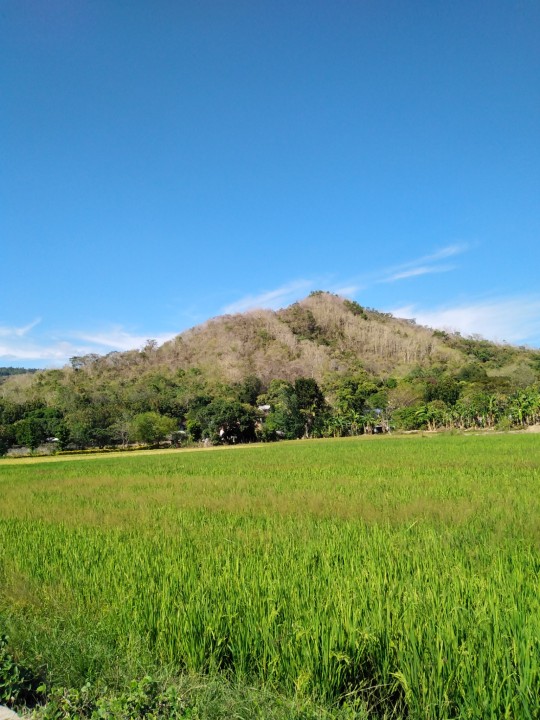




Improper waste segregation is the habitual dilemma even in our own locality. This kind of situation was the main problem even in a small town because of clogging of drainage and pond of trash because of the immorality of individuals regarding throwing the trash.
We just notice that some individuals didn't know how to segregate the trash and doesn't have the biodegradable, non biodegradable and recyclable bin in their community.
Planting is important in our life for numerous reasons. Here are some key benefits:
1. Environmental Impact: Plants play a crucial role in maintaining a healthy environment. They absorb carbon dioxide and release oxygen through photosynthesis, helping to reduce air pollution and combat climate change. Trees, in particular, are effective in absorbing harmful greenhouse gases and providing shade, which helps to cool the surrounding areas.
2. Biodiversity Conservation: Planting trees and other vegetation helps to preserve and restore natural habitats, supporting a diverse range of plant and animal species. This is important for maintaining ecological balance and preserving biodiversity.
3. Improved Air Quality: Plants act as natural air filters, removing pollutants and toxins from the air. They absorb harmful gases and particulate matter, thereby improving the quality of the air we breathe. This is especially beneficial in urban areas with high levels of pollution.
4. Soil Conservation: Planting trees and plants helps to prevent soil erosion. Their roots hold the soil together, reducing the risk of erosion caused by wind and water. This is crucial for maintaining fertile soil for agriculture and preventing land degradation.
5. Aesthetics and Mental Well-being: Plants enhance the beauty of our surroundings, whether it's a garden, park, or indoor space. Being in the presence of plants has been shown to have a positive impact on our mental well-being, reducing stress and improving mood.
7. Educational and Recreational Value: Planting and gardening provide opportunities for education and recreation. It allows us to learn about plant life cycles, ecosystems, and the importance of environmental stewardship. It also offers a rewarding and enjoyable hobby that can be shared with family and friends.
Plants contribute to reducing air pollution through a process called photosynthesis. During photosynthesis, plants absorb carbon dioxide from the air and release oxygen. This natural process helps to remove carbon dioxide, a greenhouse gas, from the atmosphere, which plays a significant role in mitigating climate change.
In addition to carbon dioxide absorption, plants also have the ability to filter and remove other pollutants from the air. The leaves of plants have small openings called stomata, which allow them to take in carbon dioxide for photosynthesis. These stomata can also absorb other gases and particles present in the air, such as nitrogen dioxide, ozone, sulfur dioxide, and particulate matter.
Trees, in particular, are effective in reducing air pollution. Their large canopies and extensive root systems make them excellent air filters. Trees can trap and absorb pollutants, including dust, smoke, and various gases, helping to improve air quality in urban areas. They also provide shade, which can lower temperatures and reduce the formation of ground-level ozone, a harmful air pollutant.
Urban green spaces, such as parks and gardens, with a variety of plants and trees, can act as "green lungs" for cities. They help to create a healthier and more pleasant environment by reducing the levels of air pollutants and providing oxygen-rich air for people to breathe.
Cutting trees and dead trees is also a dilemma to the cities like metro manila, trees are convenient and a life saver to the people since it was a good shelter when the sun was still and trees absorb water from the rain or even the stock water in the surroundings.
If we will throw our garbage properly and in the right segregation we can avoid the wrong habitual and we can see the smoothness of flowing water in the river and drainage in addition to that if we stop cutting trees it can absorb a water and it has many benefits to the individual in the communities and maybe some dead tree can survived due to the water absorbing .
It's important to note that while plants contribute to reducing air pollution, they alone cannot solve the problem entirely. It requires a collective effort to reduce emissions from various sources and adopt sustainable practices. However, planting and preserving vegetation play a crucial role in improving air quality and creating a more sustainable and livable environment.
2 notes
·
View notes
Text
What is the reason that despite so much progress there is no solution to avoid floods?
Despite significant progress in technology, engineering, and disaster preparedness, floods continue to pose a significant risk. Here are some of the key reasons why, despite advancements, floods remain a persistent problem:
Climate Change and Extreme Weather
Climate change has led to more frequent and severe weather events. Increased rainfall, intense storms, and rising sea levels are contributing to the risk of floods. As weather patterns become less predictable and more extreme, it is challenging to design infrastructure that can accommodate these changes.
Rapid Urbanization and Inadequate Planning
Rapid urbanization often leads to a reduction in natural drainage areas as cities expand. When urban development outpaces proper planning, it can result in inadequate drainage systems and increased surface runoff, leading to flooding. The growth of impervious surfaces like roads and buildings prevents water from being absorbed into the ground.
Environmental Degradation
Deforestation, soil erosion, and loss of wetlands can reduce the land's ability to absorb water, increasing the risk of floods. These environmental changes can be a result of human activities like deforestation, mining, or agricultural expansion.
Infrastructure Limitations
Existing infrastructure may not be designed to handle extreme weather events. As storms and rainfall become more intense, outdated or inadequate drainage systems struggle to cope, leading to flooding. Additionally, aging infrastructure may not be properly maintained, increasing the risk of failure during heavy rain.
Population Density and Vulnerability
High population density in flood-prone areas increases the potential impact of floods. People living in low-lying or coastal regions are more vulnerable to flooding, and relocation is often not a feasible solution due to economic and social reasons.
Political and Economic Constraints
Implementing large-scale flood prevention measures requires significant investment and political will. In many cases, there are economic or political constraints that hinder the development of robust flood prevention infrastructure.
#FloodPrevention#ClimateChange#Urbanization#EnvironmentalDegradation#Flooding#Infrastructure#ExtremeWeather#RisingSeaLevels#SoilErosion#Deforestation#Wetlands#FloodRisk#WeatherPatterns#DisasterPreparedness#PopulationDensity#PoliticalWill#FloodMitigation#EnvironmentalConservation#ResilientInfrastructure#UrbanPlanning
0 notes
Text
Types of Construction Dewatering Pumps
Cosmos Pumps is a leading manufacturer of all types of Construction Dewatering Pumps. Our submersible dewatering pumps are applicable in various other industries as well. Mentioned below are the different types of construction dewatering pumps:
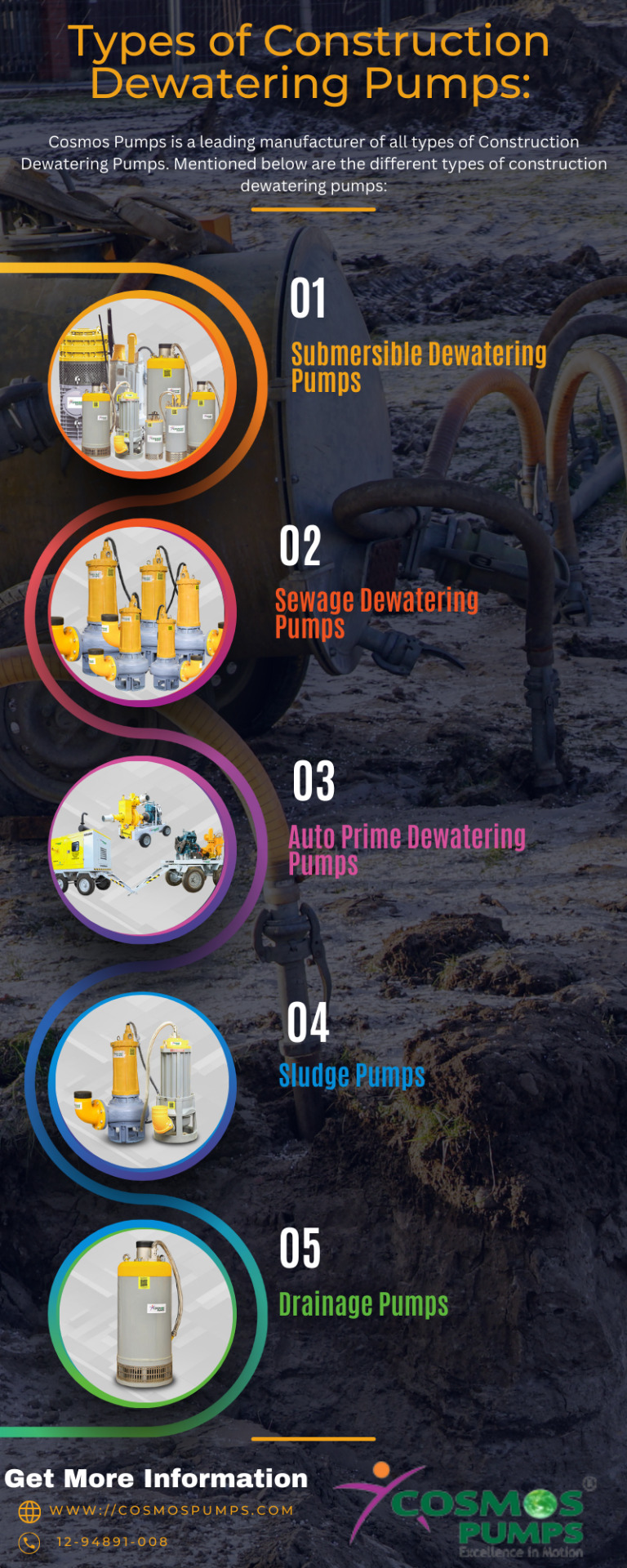
#DewateringPumps#ConstructionPumps#WaterManagement#JobsitePumps#WaterControl#PumpingSolutions#DrainageSystems#ExcavationPumps#SubmersiblePumps#CentrifugalPumps#TurbinePumps#DewateringEquipment#PumpingTech#FloodPrevention#PumpPerformance#ConstructionTech#SiteManagement
0 notes
Text

Common Problems with Pump House Drainage: Despite proper design and maintenance, pump house drainage systems may encounter the following issues:
Clogged Drainage Pipes: Accumulation of debris, roots, or sediment can obstruct the flow of water through drainage pipes.
Inadequate Sloping: Improper grading or sloping may result in water ponding or pooling around the pump house.
Insufficient Drainage Capacity: During heavy rainfall or runoff, the drainage system may become overwhelmed, leading to water accumulation.
#pumpsupplies#submersible pumps#efficiencymatters#pumpsuppliesuk#fluidhandling#cleanwater#floodprevention#watermanagement
0 notes
Text
EFFECTIVE METHODS FOR PREVENTING FLOODS #floodprevention #trending #viral
Are you tired of dealing with the devastating effects of floods? Look no further! Manasa Defence Academy offers the best training to help you effectively prevent floods. In this informative video, we will discuss the most successful methods and techniques for flood prevention. Our expert instructors will walk you through step-by-step strategies that will safeguard your property and loved ones from the dangers of flooding. Don't miss out on this invaluable knowledge - watch now and take the first step towards protecting your home!
call: 77997 99221
web: www.manasadefenceacademy.com
#floodprevention #floodprotection #manasadefenceacademy #effectivemethods #floodcontrol #emergencypreparedness #naturaldisasters #floodsafety #floodawareness #floodriskassessment#trending
0 notes
Text
What Are The Economic Benefits Of Investing In Flood Prevention And Mitigation Strategies?
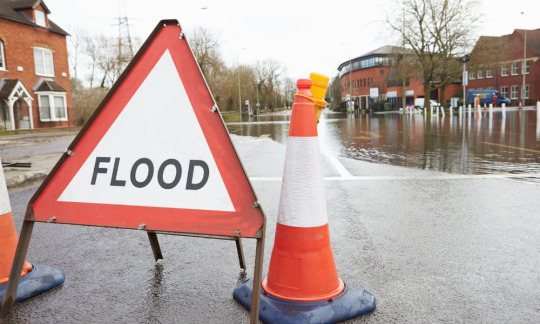
Floods are among the most destructive natural disasters, causing significant damage to both urban and rural areas around the world. In recent years, the frequency and severity of floods have increased due to climate change and urbanization. As a result, there is a growing need for effective flood prevention and mitigation strategies.
While the upfront costs of these strategies can be substantial, the long-term economic benefits far outweigh the initial investments. In this blog post, we will explore the various economic benefits of investing in flood prevention and mitigation strategies.
Reduced Property Damage
One of the most immediate economic benefits of flood prevention and mitigation strategies is the reduction in property damage. When floods occur, homes, businesses, and infrastructure can be severely affected, leading to significant financial losses. By implementing flood prevention measures such as levees, flood walls, and improved drainage systems, the extent of property damage can be minimized. This not only saves property owners and businesses from costly repairs but also reduces the financial burden on governments and insurance companies.
Lower Insurance Costs
Frequent flooding in certain areas can result in higher insurance premiums, or in some cases, make it difficult for property owners to obtain coverage altogether. When communities invest in flood prevention and mitigation strategies, insurance companies are more likely to offer affordable policies, as the risk of flood-related claims is reduced. This, in turn, leads to cost savings for property owners and businesses.
Preservation Of Infrastructure
Floods can wreak havoc on critical infrastructure, including roads, bridges, utilities, and public transportation systems. Repairing or replacing damaged infrastructure is a costly endeavor that can strain municipal budgets. By investing in flood prevention measures that protect infrastructure, governments can save money in the long run and ensure the continued functionality of vital services.
Enhanced Agricultural Productivity
Agriculture is a sector particularly vulnerable to the impacts of flooding. Crops can be destroyed, and farmland can become unusable after a flood event. Flood prevention strategies such as the construction of retention ponds and the implementation of proper drainage systems can help protect agricultural land. By safeguarding farms and crops, communities can ensure a stable food supply and reduce the economic burden on farmers and consumers alike.
Increased Property Values
Areas prone to flooding often suffer from lower property values due to the perceived risk. When flood prevention and mitigation measures are put in place, the perceived risk decreases, leading to higher property values. This benefits homeowners and communities by increasing property tax revenue, which can be reinvested in local infrastructure and services.
Job Creation
Investing in flood prevention and mitigation strategies generates employment opportunities. Construction, engineering, and maintenance of flood control infrastructure require a skilled workforce. Additionally, the restoration efforts following a flood event can create temporary jobs. These employment opportunities contribute to economic growth and stability within a region.
Business Continuity
Businesses that are located in flood-prone areas face disruptions and financial losses when floods occur. By implementing flood prevention measures, businesses can ensure continuity of operations and protect their assets. This contributes to the overall economic resilience of a community.
Reduced Disaster Relief Costs
When floods strike, governments often allocate significant resources for disaster relief and recovery efforts. By proactively investing in flood prevention and mitigation, the frequency and severity of flood events can be reduced, leading to lower disaster relief costs over time. These funds can then be allocated to other essential services and infrastructure projects.
Conclusion
In conclusion, investing in flood prevention and mitigation strategies is not only a prudent choice for safeguarding communities against the increasing threat of floods but also a wise economic decision. The long-term benefits, including reduced property damage, lower insurance costs, preserved infrastructure, increased property values, job creation, business continuity, and reduced disaster relief costs, far outweigh the initial investments. As climate change continues to pose challenges, proactive flood prevention measures are essential for building resilient and economically vibrant communities. It is clear that the economic benefits of such investments are substantial, making flood prevention and mitigation strategies a smart choice for governments, businesses, and homeowners alike.
Source: What Are The Economic Benefits Of Investing In Flood Prevention And Mitigation Strategies?
#FloodPrevention#MitigationStrategies#EconomicBenefits#InfrastructureInvestment#ResiliencePlanning#DisasterManagement#CommunityProtection#RiskReduction#ClimateAdaptation#SustainableDevelopment
0 notes
Text
Join us on a captivating journey through "Don't Even Think About It" by George Marshall, where we dissect the intricacies of climate change communication through enlightening case studies. 🌱
Read Here
#ClimateChange#CommunicationStrategies#earth#ice#GeorgeMarshall#DontEvenThinkAboutIt#ClimateAction#CaseStudies#ClimateAdvocacy#EffectiveMessaging#LearnFromBooks#ClimateAwareness#Storytelling#PositiveChange#ClimateSolutions#EnvironmentalCommunication#MixingPollution#WildfireAwareness#NaturePreservation#FloodPrevention#HurricaneResilience#EarthProtection
1 note
·
View note
Text
How to Protect your Business From Flooding

Flooding can cause severe damage to businesses, resulting in financial losses and disruptions to operations. It is crucial for businesses to take proactive steps to protect themselves from the potential devastation that flooding can bring. This article will provide you with practical tips and strategies on how to safeguard your business from flooding, ensuring its continuity and minimizing the impact of such natural disasters.
Understanding the Risks
Before diving into preventative measures, it's essential to gain a comprehensive understanding of the risks associated with flooding. Flooding can occur due to heavy rainfall, hurricanes, storms, melting snow, or nearby water sources such as rivers and lakes overflowing.
Identifying whether your business is located in a flood-prone area is the first step. Conduct research to determine the history of flooding in your vicinity and assess the likelihood of future incidents. Local government flood maps and historical data can provide valuable insights to assist you in evaluating the level of risk your business faces.
Create a Business Continuity Plan
One of the fundamental aspects of protecting your business from flooding is to create a comprehensive business continuity plan (BCP). This plan should outline the necessary steps to be taken before, during, and after a flooding event to ensure minimal disruption and damage.
Within the BCP, you should include an evacuation strategy, communication protocols, and an inventory of critical assets. Additionally, appointing responsible individuals to oversee the plan's implementation and conduct regular drills and exercises will help familiarize employees with the necessary actions to be taken in the event of flooding.
Elevate Essential Equipment and Utilities
To minimize the potential damage caused by flooding, consider elevating critical equipment and utilities within your business premises. This includes electrical systems, servers, inventory, and other important assets that could be negatively impacted if submerged.
Consult with professionals or engineers to determine the appropriate elevation levels for various equipment and utilities. Implementing proper safeguards, such as waterproofing and sealing, can further enhance protection against flooding.
Install Flood Barriers and Sealing Measures
Installing flood barriers and sealing measures can significantly mitigate the risk of flooding damage to your business. A variety of flood barriers are available on the market, including removable barriers, automatic flood doors, and flood gates.
Identify vulnerable areas within your premises, such as entry points and lower levels, and install appropriate flood barriers accordingly. Additionally, sealants and sealant barriers can provide an extra layer of protection against water ingress.
Improve Drainage Systems
Poor drainage systems can exacerbate the impact of a flood on your business. Ensuring that your premises are equipped with adequate drainage systems can help redirect water away from critical areas.
Regularly inspect and maintain existing drainage systems, including gutters and downspouts, to prevent blockages and ensure they function optimally. Consider installing additional drainage features, such as French drains or rain gardens, if necessary.
Secure Important Data and Documents
Protecting your business from flooding extends beyond physical assets; securing your important data and documents is equally crucial. Implement robust data backup systems and store backups in off-site locations or cloud-based platforms.
Moreover, consider digitizing important documents to minimize the risk of losing critical information. Cloud storage and document management systems provide secure and accessible platforms to store and manage important business files.
Insurance Coverage
Acquiring adequate insurance coverage for your business is a vital step in protecting against flooding risks. Review your current insurance policies to ensure they specifically cover flood-related damages.
Consult with an insurance professional to assess your coverage needs based on your geographical location, business activities, and potential risks. Consider purchasing additional flood insurance that covers property damage, business interruption, and contents.
Collaboration with Local Emergency Services
Establishing a collaborative relationship with local emergency services can provide valuable support in times of flooding and other emergencies. Reach out to local fire departments, police departments, and emergency response teams to familiarize them with your business.
Regularly communicate with these organizations to obtain the latest information on potential flooding threats and emergency preparedness advice. Their expertise and guidance can significantly contribute to your business's overall flood protection strategy.
Regular Maintenance and Inspections
Maintaining your business premises and conducting regular inspections can help identify potential vulnerabilities and address them proactively. Schedule regular maintenance for equipment, utilities, and drainage systems to ensure they are functioning optimally.
Inspect your infrastructure for cracks, leaks, or any signs of deterioration that may compromise your building's ability to withstand flooding. Taking preventive action early on can save your business from costly damages and disruptions.
Employee Training and Awareness
Your employees are essential stakeholders in your business's flood protection efforts. Provide comprehensive training and awareness programs to educate your staff about emergency procedures, flood risks, and their individual responsibilities.
Encourage employees to report any potential risks or vulnerabilities they observe, such as leaks or blocked drains. Foster a culture of awareness and preparedness by organizing drills and exercises to ensure everyone knows how to respond effectively in a flooding situation.
Conclusion
Protecting your business from flooding requires a multi-faceted approach that includes comprehensive planning, physical safeguards, collaboration with local authorities, and employee engagement. By implementing the strategies outlined in this article, you can significantly reduce the risk of flood-related damage to your business and ensure its continuity even in the face of natural disasters.
Remember, proactive measures taken today can save you from significant losses tomorrow. Prioritize flood protection as an essential aspect of your overall business resilience strategy.
0 notes
Text
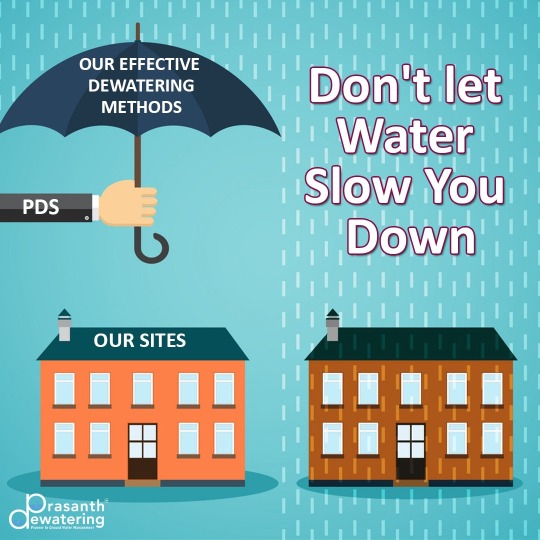
Looking for a reliable dewatering company?
Look no further! Our team of experts has the experience and equipment to handle any water management challenge, no matter how big or small. Whether you need to remove excess water from a construction site or control sediment runoff from an industrial operation, we have the solutions you need to get the job done right. With our cutting-edge technology and commitment to quality, you can trust us to deliver results that exceed your expectations. So why wait? Choose our dewatering company today and experience the difference that our expertise and dedication can make!
☎️ 98415 82888 / 98407 11116
🔗 www.completedewateringsystem.com
#MondayVibes#dewatering#watermanagement#sedimentcontrol#pumpingservices#construction#industrial#environmental#floodprevention#stormwater#groundwater#wastewater#sustainability#infrastructure#civilengineering#effluentmanagement#innovation#qualityservice#reliability
0 notes
Text
Top 8 Water Management Trends & Innovations in 2024
Arya College of Engineering & IT, Jaipur is recognised as a major contributor to the water resources engineering & management and watershed development & management at the national level.
1. SmartWater Management: Utilizing IoT, AI, and smart meters to track and manage water resources in real-time, improving efficiency, and reducing waste.
2. WastewaterProcessing: Advanced water treatment methods, such as membrane filtration, UV disinfection, and ozone treatment, for better water quality and resource recovery.
3. AdvancedFiltration: Innovative filtration techniques, including nanofiltration and ultrafiltration, for improved water treatment and purification.
4. FloodPrevention: Using drones, weather radars, and other technologies to monitor water levels and prevent flooding, ensuring water safety and resource management.
5. Water-savingtechnology: Smart irrigation systems, low-flow fixtures, and other water-saving solutions to conserve water resources.
6. DecentralizedInfrastructure: Decentralized water infrastructure, such as rainwater harvesting systems and onsite wastewater treatment, to improve access to drinking water in remote areas.
7. InnovativeMaterials: Novel materials, like graphene-based membranes, for more efficient and sustainable water treatment and filtration.
8. Desalination:Advanced desalination technologies, such as reverse osmosis and electrodialysis, for converting seawater into freshwater.
9. Real-TimeWater Quality Monitoring: Continuous monitoring of water quality in remote locations, ensuring sustainable and safe water resources.
10. Technology-DrivenReduction in Water Distribution Leakage: Innovative technologies, such as advanced sensors and data analytics, to detect and fix water leakages, conserving water resources and reducing operational costs.
11. RemoteSensing of Water: Remote sensing technologies for water accounting, non-revenue water remediation, and water management.
12. SmartIrrigation: IoT-enabled smart irrigation systems for efficient water use in agriculture.
13. WaterQuality Control: IoT-enabled water quality control systems for real-time monitoring and management.
14. DistributedTechnology: Distributed technology for expanding water and wastewater services to remote areas.
15. Low-Costand Effective PFAS Remediation: Innovative solutions for removing per- and polyfluoroalkyl substances (PFAS) from water.
16. MagneticCell-Enrichment Technology: Attractive solutions for water treatment and resource recovery.
17. BiodegradableDisinfectants: Natural disinfecting micelles based on ionic liquids for water treatment, reducing bacterial resistance.
18. Chemical-FreeWastewater Removal Treatment: Cost-effective and chemical-free water treatment for removing dyes and producing nitrogen fertilizer.
19. ReplacingGlass pH Electrodes with Metal: More robust metal electrodes for pH sensing in water samples, improving durability and reducing fragility.
20. SparklingWater Treatment Using Nanobubbles: Cost-effective and chemical-free nanobubble generation for water treatment, with minimal impact on water quality and aquatic life.
How do smart water meters work
Smart water meters work by utilizing advancedtechnology to measure and monitor water consumption accurately and in real time. These meters consist of several core components that enable their functionality:
1. HighlyAccurate IoT Sensor: Smart water meters are equipped with a highly accurate sensor, typically based on ultrasonic or electromagnetic principles, that measures water flow precisely as it passes through the meter.
2. MicrocontrollerUnit (MCU): The meter includes a microcontroller unit that processes data collected by the sensor. The MCU can analyze water consumption patterns, detect leaks, and provide real-time data for better decision-making.
3. WirelessCommunication Modules: Smart water meters are equipped with wireless communication modules such as cellular, Wi-Fi, or LoRa. These modules enable seamless data transmission, allowing for remote monitoring of water consumption and prompt identification of anomalies.
0 notes
Photo
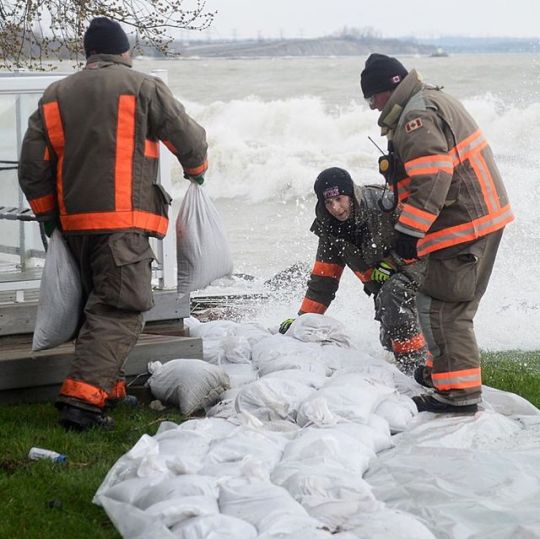
Clarington firefighters placed sandbags at the back of a home on Cedar Crest Beach Road in Bomanville May 1, as residents prepare for possible flooding. There have been three sessions of building sand bags with the residents and community volunteers along with two sessions with Clarington firefighters. Firefighters were onsite May 1 to help residents place the sandbags around their home. May 1, 2019 Sabrina Byrnes/Torstar #floodprevention #sandbags #bowmanville #claringtonfire #durhamregion #clarington #newsdurham #photography #photojournalism https://www.instagram.com/newsdurham/p/BxaOOGiAWo5/?utm_source=ig_tumblr_share&igshid=1kqt24udltpwc
#floodprevention#sandbags#bowmanville#claringtonfire#durhamregion#clarington#newsdurham#photography#photojournalism
2 notes
·
View notes
Photo
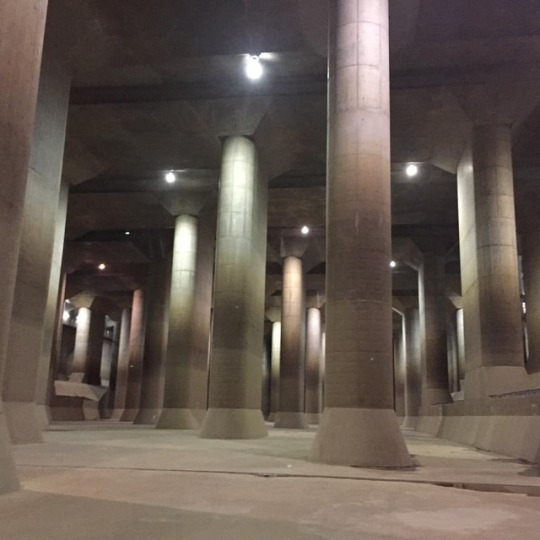
Mammoth #saitama #floodprevention #discharge #chamber #immense #japanlife #travel #streetphotography (at Saitama Prefecture) https://www.instagram.com/p/Bpt41M2Hcp1/?utm_source=ig_tumblr_share&igshid=1j7liivfxmik3
3 notes
·
View notes
Text
#Flooding#HeavyRainfall#ClimateChange#NaturalDisasters#StormSurges#Urbanization#Deforestation#Snowmelt#RisingSeaLevels#FloodPrevention#EnvironmentalImpact#DrainageSystems#Infrastructure#HumanImpact#GlobalWarming#ExtremeWeather#FloodMitigation#EmergencyResponse#DisasterPreparedness#WeatherImpact
0 notes
Text

Dewatering Pumps: Coimbatore's Best Solution
For top quality dewatering pump in Coimbatore reach out to us today at Cosmos Pumps. Our wide range of dewatering pumps includes submersible dewatering pumps, slurry dewatering pumps, non-clog dewatering pumps, and auto-prime dewatering pumps as well.
#Construction#DewateringPumps#WaterManagement#ConstructionEquipment#MiningIndustry#WaterRemoval#EfficientPumps#IndustrialPumps#ConstructionSites#MiningOperations#WaterControl#FloodPrevention#GroundwaterManagement#DewateringSystems
0 notes
Text

Mechanism of Sump Pump Drainage: Let's delve deeper into the step-by-step process of how sump pump drainage works:
Pump Activation: When water accumulates in the sump pit, the float switch rises with the water level. Once it reaches a predetermined level, it triggers the pump to turn on.
Water Discharge: The pump draws water from the sump pit and pushes it through the discharge pipe.
External Discharge: The water is then discharged away from your home's foundation through the discharge pipe, preventing it from re-entering the basement.
#watermanagement#fluidhandling#submersible pumps#pumpsuppliesuk#cleanwater#floodprevention#efficiencymatters#sustainablesolutions
0 notes
Photo
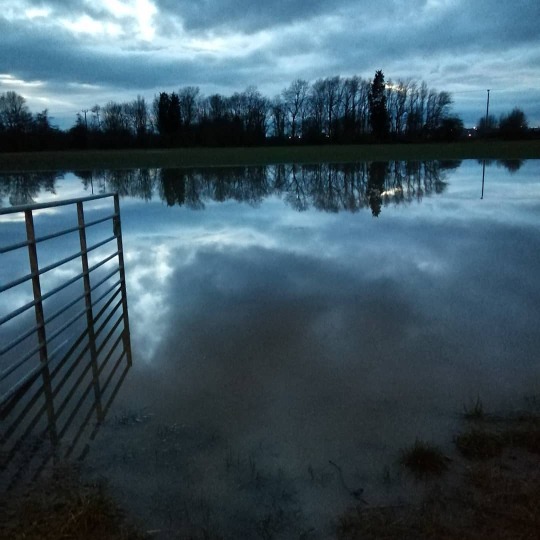
This looks like deliberate flooding to protect properties. I didn't try and cross. #floods #floodprotection #floodprevention (at Woodmansey) https://www.instagram.com/p/CKo4yZLF8w_/?igshid=1w7n9rzp74ad6
0 notes